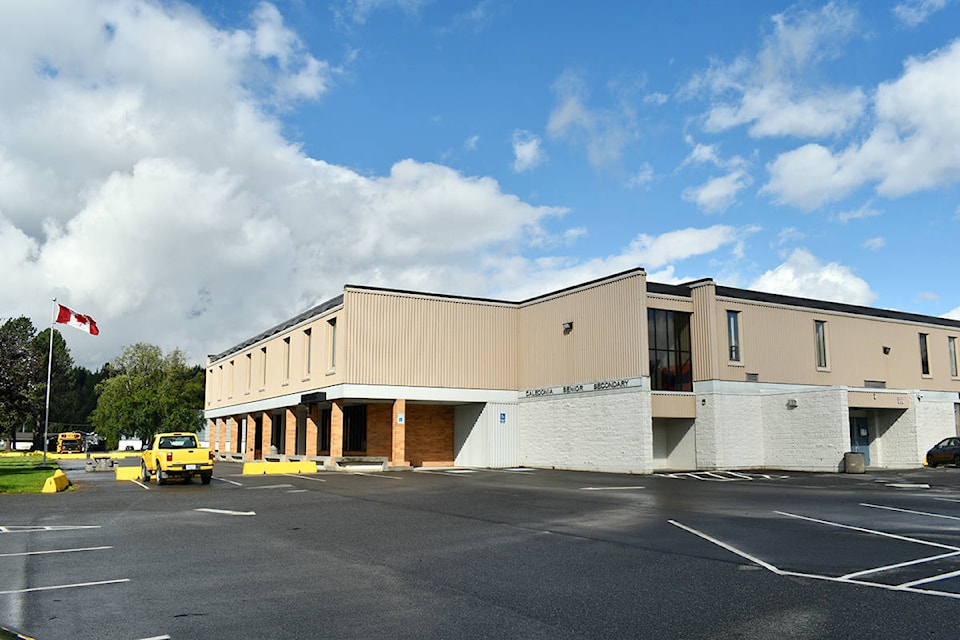Coast Mountains School District 82 is preparing to welcome children back to school on Sept. 10.
The district’s COVID-19 safe return to school plan was approved and released on Aug. 26. Both the district’s K-12 Education Re-start Plan and the School Site Safe Work Procedures documents are in “draft,” meaning they are subject to change when teachers and staff provide input and receive training on their first day, Sept. 8. There are a litany of safety measures outlined in the plans, and SD82 said health and safety are its top priorities.
Parents have the option to register their children in traditional school, homeschooling or distributed learning. SD82 Superintendent Janet Meyer said she doesn’t know how many children will be enrolled in each option yet, because the school district is not setting a deadline or forcing parents to choose until they feel comfortable.
“We’re taking a very patient approach with parents ... so they are in a position to make an informed decision around which of the three options they feel best suits their child at this given time,” she said.
Distributed learning refers to distance learning, or correspondence school. Students interact with their instructor digitally and support is provided remotely. Meyer said that teachers can choose to teach in the distributed learning model, and that training would be provided to teachers who want to teach online but who may not be totally confident using the technology.
Details of the safe return-to-school plans could still change because staff and occupational health and safety committees will give feedback when they return to school on Sept. 8., two days before students arrive.
“I would love to have had the input of our employee groups through the entire month of August, I recognize and respect the fact that they’re on summer vacation,” said Meyer.
“It will happen on the eighth and we have no choice but to be ready for children on the tenth, and the leadership we have in our schools will make sure that that happens.”
Meyer noted that while there is flexibility in the documents, there is not flexibility in the British Columbia Centre for Disease Control’s guidelines for safety, which the plans were based on.
Since early August, Meyer has been in frequent contact with the District Parent Advisory Council, Coast Mountains Teachers Federation and the Canadian Union of Public Employees. Meyer said she and Director of Instruction, Indigenous Education Agnes Casgrain have met with all 10 Indigenous bands in the school district.
For students physically attending school, the plans contain a variety of protocols and requirements to minimize the risk of COVID-19. Non-medical masks are required for staff, middle and secondary students in high traffic areas like busses, hallways or whenever physical distancing is not possible.
Masks are not recommended for elementary students, due to the likelihood that they will touch their faces more often and need help putting on and taking off masks. Students with certain preexisting health conditions will not be required to wear a mask.
Children will be visually screened for COVID-19 symptoms when they enter their schools and classrooms. Should a student say they are not feeling well or display a cough, flushed face, sweating or runny nose, they will be taken to the principal’s office and seated in a secluded area. They will be given a non-medical mask and wait until a parent can pick them up. Students may return when all signs of illness are gone.
One of the biggest changes this year is the cohort system. The school district said that the system will reduce the number of close interactions a person has at school without requiring physical distancing to be practiced constantly, by grouping up to 60 people together in elementary and middle school and 120 people in secondary schools. Cohorts can be made up of students and staff or only students.
Exact cohort sizes are subject to change and may be different depending on the individual school. Instructors may move between cohorts but are required to wear a mask when dealing with other groups of students.
At Caledonia Secondary School, semesters will be broken into quarters, each running nine weeks. In addition to staggered breaks and start and end times, students will be in a home cohort of 20-30 students. Students are encouraged to go home at lunch, but there will be designated seating and mask requirements for those that remain at school.
Contracted bussing services will comply with the British Columbia Centre for Disease Control guidance, which includes cleaning and disinfecting busses. Drivers will regularly use hand sanitizer and wear a mask while loading and unloading the bus.
The district also recommends strategies for bus drivers to reduce close interactions between people like giving each student their own seat if there is room and considering the order that students board and exit the bus.
Meyer said that if the Province orders a return to the more restrictive phase three due to an outbreak of COVID-19, the district has the agility and experience to make it happen. She said she is focused on the task at hand.
“It doesn’t matter if I’m stressed out, or it doesn’t matter if I’m sleeping, I have a job to do and I need to make sure it gets done,” she said. “The most important thing for me is that we have children back in school if that’s the decision that is made for them by their family because it’s in their best interest and that we are going to do that safely. Really that’s what I’m excited about.”
READ MORE: School advocates hope new federal funding can assist B.C. schools with more flexibility
Detailed plans for each school are available on the school district’s website.
